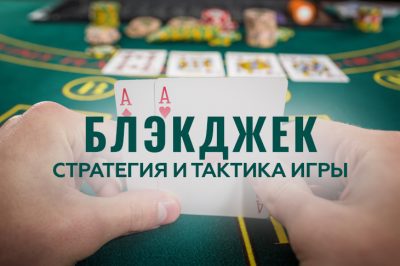
Blackjack is a card game in which success depends largely on the skills and experience of the participant. The game is well studied from a mathematical point of view, which allows you to predict the outcomes of rounds. Developed by experts, the basic strategy of blackjack helps beginners to avoid significant losses at the stage of familiarization with the entertainment. Correctly applying it, the player will increase the probability of victory.
- Why do you need a strategy
- The history of the basic strategy
- Basic blackjack strategy
- Blackjack table with deciphering
- Other popular tactics
- Are there any win-win options
- Frequently Asked Questions
Why you need a strategy
When choosing a tactic, a player relies on the information available after the first hand. This is his own point baggage and the value of the dealer’s open card. If you apply the information from the table, you can find the most favorable decision regarding further actions in the game.
The strategy will tell you when it is better to get, pass or double the bet
The strategy will tell you when it is better to get, pass or double the bet.
However, there are no perfect tactics. Any variant of the game contains an inherent advantage of the casino, which will lead the average participant to defeat at long distances. But the number of unsuccessful games can be minimized.
History of the emergence of basic strategy
Attempts to create an ideal tactic have been made by players since the XIX century. The first effective basic strategy belonged to Jess Markovich (Markum), the son of a Russian immigrant. Having created his own scheme in the 1950s, this professional player earned a tidy sum in the country’s establishments until he was banned from them.
The development of the strategy took place in the late 1950s. The Aberdeen Four – soldiers of the American army – developed an improved version of the scheme over 18 months of meticulous research with the help of a counting machine. The result was published in the book Playing Blackjack to Win, which is considered a classic.
Basic blackjack strategy
Properly applied game tactics can reduce the dealer’s advantage. The basic strategy is suitable for beginners. To use it, you need to calculate the points in the received hand and on the dealer’s open card. Then it is necessary to find in the table the most suitable plan of action for the next turn.
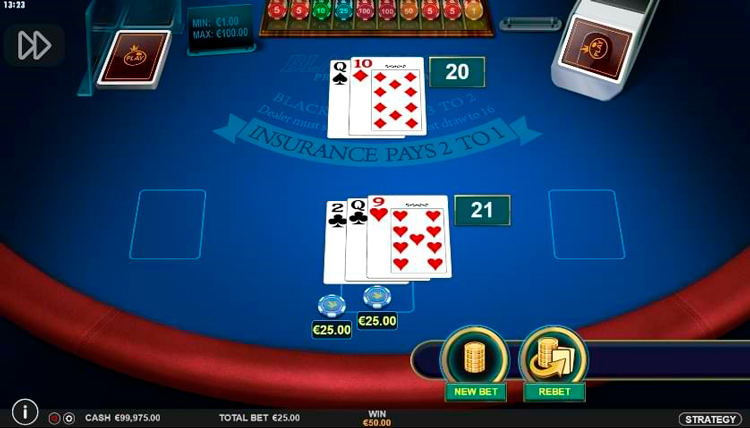
Some features of the strategy are obvious. For example: if the dealer has an open five or six, the next move he is sure to get an overcall. By following the instructions, the participant should pick up, do not use insurance and try to double the bet, if it is allowed by the rules of blackjack.
For predictions to help, it is necessary to choose a table suitable for the type of layout received by the player. It is also necessary to take into account the number of decks in the game.
Soft combinations
If there is an ace in the player’s hand, his hand is called Soft. In a soft hand, the following strategic guidelines apply:
- A hit (raise) is unnecessary with an 18 or 19.
- Double (doubling) is appropriate with a point baggage of 15 points or more, and the dealer must have no more than 5 points.
- Split (splitting pairs) is better for cards with face value up to 9.
Having an ace in the layout, you can get almost to the maximum. In case of overcall it will bring only 1 point. If the dealer has more than 9 points, you can get up to 19 points.
Hard combinations
Hard hand – a layout without an ace. Surrender implies such actions:
- Having received more than 17 points, it is better to stop rebounding.
- If the dealer has a deuce or a three, it is necessary to make a hit to 13 points.
- Doubling is recommended when you get ten or eleven points.
Additional options are also available, such as insurance. It can be arranged if the dealer has an ace with the first card opened.
Two Pairs
A player has the right to split (split) a pair of cards received in the same hand. After splitting, he will control two separate hands. To split pairs, a bet equal to the original bet must be placed on the table.
The exception to the rule is two aces received in the same hand. Splitting them results in the addition of an extra card to each hand. After that, the player has no right for a raise.
If the split results in another pair, it can also be split. Some rules limit the number of Split options. The conditions for Ace Split are specified separately.
Playing with one deck
As a rule, Blackjack uses from 4 to 6 card sets per game, but there are exceptions. Blackjack strategy table for a single deck suggests such actions on a hard hand:
- Doubling on 7 points or less, regardless of the dealer’s layout.
- Doubling on 11 points in any dealer’s hand.
- Stand (refuse to rebid) with 17 and 18 points. You should also pass with 13 points or more if the dealer has up to 6 points
Actions on a soft hand:
- Dobor with a fold to 17, regardless of the dealer’s hand.
- Double from 13 to 14 if the dealer has no more than 5 points.
- Reject a hit at 20 points or over 18 when the dealer shows a card with a value up to 8.
If the rules include the option to surrender, you can do so with 15 or 16 points due to the dealer’s strong hand (an open ten or ace).
Playing with two decks
Blackjack strategy for doubled card sets is practically no different from the previous one. In the case of a tight layout, the recommendations are as follows:
- Hit can be made up to 11 points without taking into account the croupier’s hand. It is also necessary to pick up with a hand from 12 to 16, when the dealer has a hand older than six.
- If the hand is from 13 to 16 and the dealer’s hand is less than a 6, you should refuse to raise.
- The ideal doubling is on 11 points with any dealer’s hand.
Tips for a soft hand:
- You can always rebuy except when there are 18-20 points in the hand.
- 13 points with a dealer’s five or six is the perfect combination for a double.
You also shouldn’t split when you get a five and a five against the dealer’s twos or nines. Such a layout is good for doubling up.
4 to 8 decks
The most common version of the game. As a rule, this version is used in land-based casinos. In the course of the game remains played cards. They do not take part in further rounds.
For this option is suitable for the classic tactics of blackjack:
- Hit to 13 on a hard hand, to 18 on a soft hand.
- Doubling up with 10, 11 if the dealer has up to 10.
- Splitting in all cases except fives and tens.
If the rules do not provide Split and Double options, it is recommended to double up to 18 to 21 points.
Blackjack table with decoding
The basic tactics for a solid combination are described in the table.
| Player | Dealer | Action |
|---|---|---|
| 5-8 | Any | Hit |
| 12 | 4-6 | Hit or pass |
| 17 | Either | Pass |
The actions for a soft combination are different. See the table for details.
| Player | Dealer | Action |
|---|---|---|
| 13-17 | Any | Hit |
| 18 | 9, 10, Ace | Hit |
| 19 and up | Any | Pass |
The Surrender rule applies here as well, a 15-16 point surrender if the dealer showed a ten or ace.
Other popular tactics
Besides the basic one, there are additional variants of strategies. The appropriateness of their application depends on several factors: the number of decks, the presence of additional rules, new combinations, the peculiarities of the dealer’s behavior when reaching 17 points.
There is even an automatic strategy generator suitable for different types of Blackjack
There is even an automatic strategy generator suitable for different types of Blackjack.
You can use it at your own risk. The best way to test the generator is with demo versions of online casino games. The user can test any tactics in practice without fear of losing money.
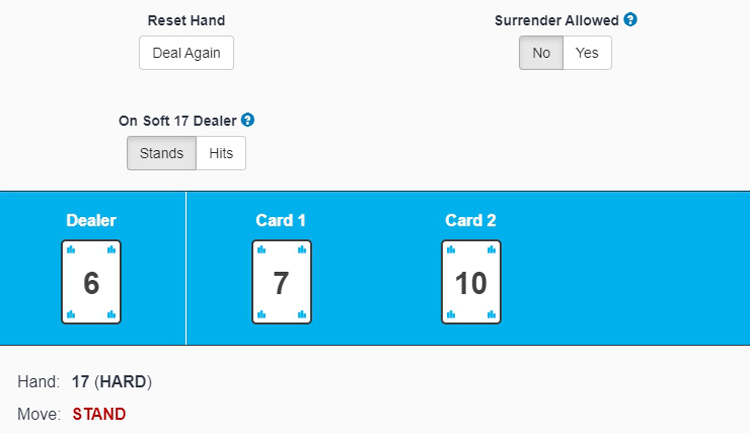
Some players also use:
- Martingale system.The user should start with a small bet, double it when losing and reduce it again to a minimum if lucky enough to celebrate a victory.
- Card counting.The principle is based on memorizing the deck elements that have come out of the game. It allows you to calculate the value of the remaining cards. Its use is pointless in online casinos and when using croupiers shuffle machines.
There are other strategies that refer to sharp increases, decreases in the size of bets in order to break a big score on potentially good layouts.
The Shuffle tracking technique allows you to visually assess where the valuable cards fall when shuffling
Shuffle tracking allows you to visually assess where the valuable cards fall when shuffling.
In order to use it, you need to have good attention skills, the ability to focus on the goal and not react to stimuli.

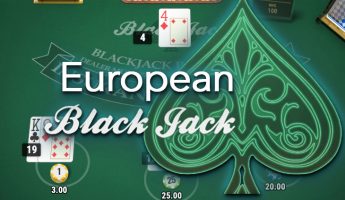
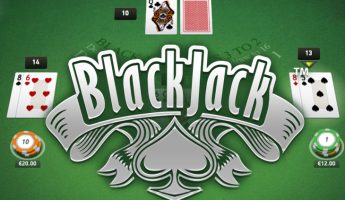
Are there any win-win options
Any casino has an advantage over the client. Therefore, there are no truly win-win strategies. You can try to level the advantage, using basic tables, improving skills. At the same time, on long distances, any casino client will still lose. How much and how often – it is a matter of the user’s skills, experience, knowledge of the principles of Blackjack.
Frequently asked questions
Yes, there are. The rules may include rewards for combinations of card values, a specific sequence of denominations.
This is a side bet that is made in addition to the main bet. An example of a side bet is the Perfect Pairs option, assuming a pair falls in the first hand.
Card Counting Method. The player marks out tens, aces with a positive numerical value. Small denominations – negative. If the counting results in a positive number, the probability of victory increases.
Yes, state regulators do not prohibit the use of such techniques. At the same time, the internal rules of land-based establishments do not accept counting.
No, experienced players do not recommend using Insurance. The option implies insurance against a blackjack combination falling out at the dealer with an open ace. The probability of this event is relatively low.


